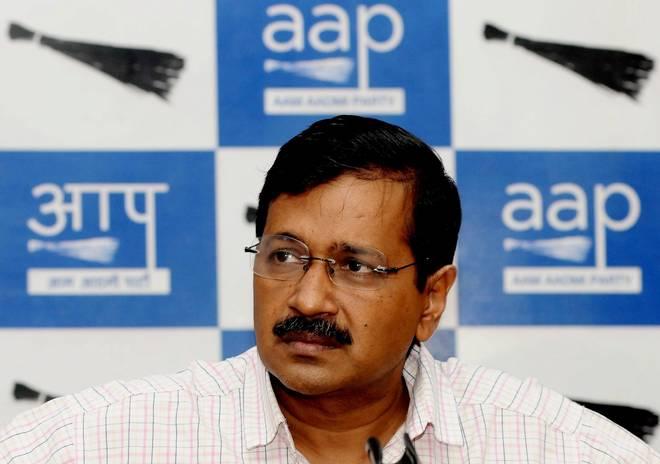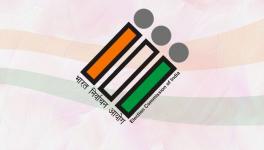Aam Aadmi Party: Politically Eclectic or Selectively Centrist?

The Aam Aadmi Party (AAP) has its provenance in the Anna Hazare-led Jan Lokpal Movement of 2011 from which the ‘Mufflerman’ shot to fame. Under the banner of India against Corruption (IAC), lakhs of people mobilised themselves to rise up against the then government (Congress-led UPA regime) for the Jan Lokpal Bill to be passed immediately. Thus, the anti-corruption protests led to the culmination of the Arvind Kejriwal-led AAP. While the ‘Bijli-Pani’ Andolan of 2013 formed the cornerstone of the AAP’s political agenda, catapulting the party into a potent political force, the latter’s party line always seemed to be under question. The insignia of the ‘Aam Aadmi’ that had caught people’s fancy and captured public imagination then, has come under much public scrutiny in the recent times, more so ensuing the outbreak of violence in various parts of Northeast Delhi in February 2020. The earlier enthusiasm of voters on the return of Arvind Kejriwal to power on February 8 can be seen fraught with frustration and anger today – ‘while Delhi is burning, what is Arvind Kejriwal doing?’ seems to be the recurring question.
The lackadaisical attitude of the chief minister to the whole situation of communal flare-up in Delhi is symptomatic of a larger political problem that warrants deeper investigation rather than simply skirting it aside as an issue of inaction by the state government. While the state government wants to convince the citizens with the usual rhetoric that law and order is not under its purview, being the CM and the leading face of the AAP, it is for Arvind Kejriwal to understand and take cognisance that politics is not merely about the act of ‘doing’ or ‘not doing’, it is also about stating one’s political position on issues that matter. The irony is that an erstwhile Satyagraha activist who would flock the streets leading protest demonstrations against the establishment is today found being succumbed by it. AAP, which is the embodiment of the so-called ‘progressive-liberal’ middle class ideal, is today facing a backlash from different quarters of the middle class itself over the political concern that is holding back the party from playing an interventionist role in times of acute crisis.
After winning in the recently concluded elections by such a decisive mandate, portraying oneself as powerless in such grim situations is not only a sign of extreme political weakness, but also Kejriwal’s inability to send across a political message to the constituency that voted him to power. The acts of omission and commission of the AAP both before and after the violence in Delhi speaks volumes about the party’s lack of commitment to the ideals of social justice and secularism espoused by the Constitution of India. Needless to say, even much before the outbreak of the violence, the AAP’s stand on the peaceful protests spanning across the city of Delhi over the opposition to the CAA-NRC-NPR was dubious.
Also read: Delhi Violence: Shattered Hopes, Destruction and Courage
What is the AAP’s party line or what does AAP stand for? – is the moot question that is being floated time and again. While this should have been a more pressing concern before Delhi went to polls recently, the ‘Bijli-Pani’ formulae which became the major planks on which the AAP fought the elections in 2020 seemed to have convinced the ‘Aam Aadmi’ for the time being. And the AAP also got it right by winning 62 seats. Kejriwal-led AAP seems to have built this political narrative that if the government takes care of public welfare through policies and schemes, it need not necessarily have an ideological position on issues like secularism, threats to constitutional safeguards, or communal violence. The model of ‘good governance’/‘development’ minus political positions for or against questions of communalism, secularism, economic issues, labour rights, neoliberal policies, caste and gender discrimination have only raised dilemmas about whether the AAP is politically eclectic or selectively centrist in its approach. This argument can be taken further to unpack the structure and mechanism of the AAP today. While members of the AAP have expressed its opposition to the CAA, the Delhi government has been completely silent about putting activities related to the NPR on hold. The party has treaded on a balancing line in an attempt to not only appease those in support of the CAA and opposed to the protests, but also to hide its own fault lines in failing to expose the discriminatory content and intent of the law. The incongruous comments made by Arvind Kejriwal on different occasions have only raised critical questions about AAP’s brand of ‘alternative’ politics.
The lack of painstaking ideological work at the grassroot has only come to show that the spectrum of politics of the AAP is confined, both in nature and practice. What warrants mention is that the ideological vacuum created by the AAP has been successfully captured by the BJP’s nationalist anti-Muslim agenda that gained greater momentum in the recent orchestrated attacks against the latter. While peaceful protests are a sign of a healthy democracy, the AAP’s conspicuous vagueness on such issues is not only disturbing, but also raises important concerns about the state of contemporary politics in the country. It is important to note that for the party to put issues in perspective, simply fighting elections on issue-based campaigns by shunning politics of caste, class, gender and religion is not enough. The AAP has to remodel and reorganise its politics and strategies differently in order to confront the malice of communalism. It has to certainly understand that ‘Jai Bajrang Bali’ cannot be a compelling counter to ‘Jai Shri Ram’!
A major shift can be observed in Kejriwal’s vis-à-vis AAP’s political positioning post the Lok Sabha elections in 2019. Kejriwal positioned himself right-of-centre and publicly displayed his Hindu identity. AAP leaders invoking of religious imageries on various occasions to pose a counter to the BJP’s Hindutva rhetoric only exhibits the inherent religious parochialism of the party. While being ‘religious’ does not automatically mean ‘communal’, but constant touting of Hindu religious symbols for electoral gains invariably promotes a narrow, exclusivist majoritarian position which in any case leads to ‘otherise’ an already vulnerable minority community.
The organised and targeted attacks in Delhi may not be Kejriwal’s culpability, but the lack of a clear official statement and the inability to take a strong political stand to the emerging pogrom certainly was. It is time that Kejriwal rethinks and creates a brand of politics that stands in variance with the ideology propagated by the BJP than be succumbed by it. Who is the ‘Aam Aadmi’ that the party attempts to cater to? What is the class constituency of the ‘Aam Aadmi’ at stake? These are pertinent yet unresolved questions that the AAP has to consciously tackle. While Kejriwal’s ‘politics of universalism’ without a definite target group has its own advantages, such politics also reeks of populism that hinges on the principle of excluding the context of the ‘particular’. This is the reason why the AAP has the support across communities and classes and lacks a core support base. A floating support base which switches to the BJP in Lok Sabha election is also its important indicator. Politics cannot be thought of as a system that is derived from conforming to all political ideals and classes. Instead, it has to rest on the re-imagination of a system that draws its emancipatory potential from the basic social classes.
Ashmita Sharma is a PhD scholar at the Tata Institute of Social Sciences, Mumbai and Dibyayan Datta is an independent scholar. Views are personal.
Also read: Delhi Violence: The BJP’s Scary Vision for ‘New India’
Get the latest reports & analysis with people's perspective on Protests, movements & deep analytical videos, discussions of the current affairs in your Telegram app. Subscribe to NewsClick's Telegram channel & get Real-Time updates on stories, as they get published on our website.
























